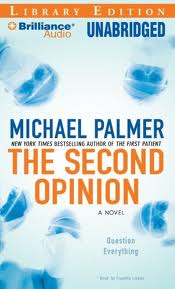Yesterday I talked about some of the things I learned about reader expectations in my Category Fiction class. By way of example, I mentioned some techniques for building suspense in Thriller novels.
There was more, though. To my horror, I realized after six months of promoting my suspense series as a Thriller that it’s a Mystery/Thriller hybrid at best, but really it’s much closer to a Mystery than I would have guessed.
Understanding Your Category
 That matters. That matters in a big way, because one of the main things we saw in this class is the strong differentiation between categories, and that differentiation creates (and is created by) reader expectations that can ultimately determine the success of a book.
That matters. That matters in a big way, because one of the main things we saw in this class is the strong differentiation between categories, and that differentiation creates (and is created by) reader expectations that can ultimately determine the success of a book.
It doesn’t matter how good a Mystery is. If you put it in the hands of a reader who only likes Thrillers and the book flops as a Thriller, the reader isn’t going to like it.
I experienced that firsthand with Women’s Fiction (where I liked First Lady better than The Cinderella Deal only because I don’t like the Romance stuff that The Cinderella Deal got right), and I kept encountering it again throughout the semester. The two times it most stuck out to me were with Carpe Demon and The Second Opinion.
Carpe Demon by Julie Kenner is an urban fantasy novel aimed with pinpoint accuracy at a target market of suburban soccer moms. It hits home — the series is surprisingly successful — but as a fan of traditional fantasy (and not a soccer mom), I found its popularity baffling.
The book constantly refuses to tell the fantasy tale, focusing insistently on a more mundane story at every step of the way. That was a huge drawback for me, but the “soccer mom” aspect of the story is precisely what appeals to most of the book’s audience. The author understands her readers’ expectations and writes directly to them.
Writing What They Want
 Michael Palmer does the same thing in The Second Opinion, creating a perfect illustration of a point our professor offered in her lecture on the topic of Medical Thrillers: the educated readers of these books are usually far more interested in realistic, intriguing medical scenarios than in elegant prose.
Michael Palmer does the same thing in The Second Opinion, creating a perfect illustration of a point our professor offered in her lecture on the topic of Medical Thrillers: the educated readers of these books are usually far more interested in realistic, intriguing medical scenarios than in elegant prose.
Written by a practicing doctor, Second Opinion shows that principle in perfect clarity. It features a protagonist with Asperger’s Syndrome, a victim with the horrific Locked-In Syndrome, and villains taking advantage of a high-tech hospital’s government-mandated transition to electronic medical records to create a twisted, driving plot.
Meanwhile the characters are flat and unlikable, the frequent exposition is dry and tedious, and the storytelling is downright clumsy. That doesn’t stop the book selling, though, because the writer does exactly what his readers expect of him: he writes a gripping Medical Thriller.
That’s something I need to understand and internalize in my own writing — stop trying to write the universally perfect book, stop giving myself so much credit for academic style, and actually write a book that will work with a real-world audience.
What about you? Do you know your category? Are you writing to it? If not, what do you need to do to fix that?
(Once again, I really wouldn’t recommend buying either of those books, but just in case you decide to disregard my advice, the links above are all affiliate links. That way at least some good will come of your misguided choices.)






Great reviews! Always fun to read, valuable advice as well. Thanks!
Sarah Allen
(my creative writing blog)